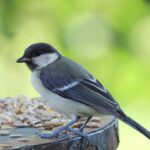Understanding the Role of Berry-Producing Plants for Birds
Just as the vibrant hues of birds elevate our spirits, the allure of ripe berries adds to their bliss. Indeed, the relationship between birds and berry-producing plants is a timeless tapestry woven by Mother Nature herself. This symbiotic relationship is an extraordinary spectacle to witness, let alone take part in nurturing it.
One cannot overstate the importance of berry-producing plants as a food source for birds, especially during winters when food is scarce. Loaded with vital nutrients, berries serve as the perfect food source for chirpy friends to stay nourished during harsh weather conditions. The consumption of berries does not only benefit birds, but these plants flourish from their seed dispersal, ensuring a beautiful cycle of life continues.
Best Berry-Producing Plants for Attracting Birds
Taking a small step toward nature can transform your garden into a vivacious sanctuary, teeming with diverse bird species. Consider these bird-favored berry-producers:
- Serviceberry: This native plant delivers early-season berries and vibrant autumn hues, a perfect treat for both birds and garden aesthetics.
- Winterberry: A deciduous holly that provides a spectacular sight when laden with red berries against the snowy winters, readily savored by birds.
- Juniper: Evergreen and hardy, junipers are loved by many birds for their berries and the protective cover they offer.
Each of these berry-wonders offers a myriad of benefits to birds and gardens alike. By providing vital food sources for birds, they play a pivotal role in supporting local biodiversity. Furthermore, these plants contribute depth and color to the landscape, augmenting the overall visual appeal of the garden.
Planting & Growing Berry-Producing Plants
The process of growing these plants might begin with a handful of soil and a tiny seed, but the rewards extend to rich, flourishing vegetation and melodious bird songs. Here’s a step-by-step guide to start:
- Choose a location with a blend of sun and shade.
- Prepare the ground by adding a mix of compost and soil to ensure optimal plant growth.
- Plant the seeds or young plants following specific spacing and depth guidelines.
- Water regularly but ensure good drainage to prevent root rot.
- During the growth phase, pruning might be required depending on the plant.
Each variety demands specific care. For instance, serviceberry thrives in well-drained soil with part to full sunlight, while winterberry prefers wet soils along with full sun exposure. Juniper, on the other hand, can tolerate a broad range of soil conditions.
Conclusion
Opening the door to a garden filled with birds is more than just a harmonious sight; it’s an affirmation of our efforts in creating an ecosystem that respects and sustains biodiversity. The simple act of nurturing berry plants goes a long way in offering sustenance to birds and other wildlife species. As an added bonus, the sweet songs and chirpy melodies serve as gentle reminders of the lively world existing right in our backyards.
So, in the pursuit of eco-conscious living, let’s set the scene for our feathered friends. Let’s transform our gardens into thriving habitats abuzz with the delights of nature and the joyous chirping of birds.



